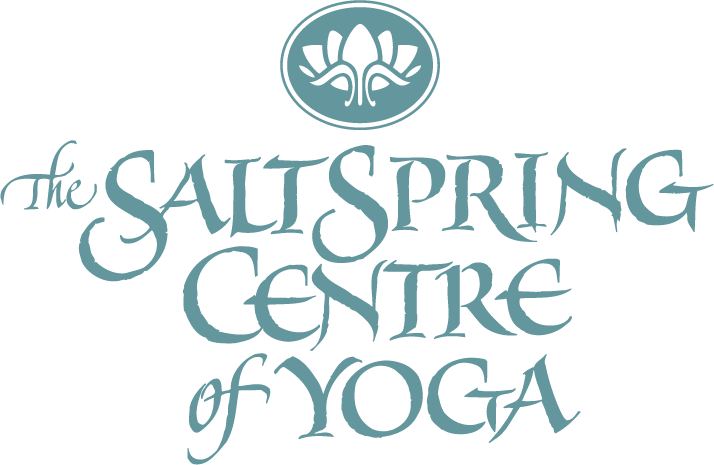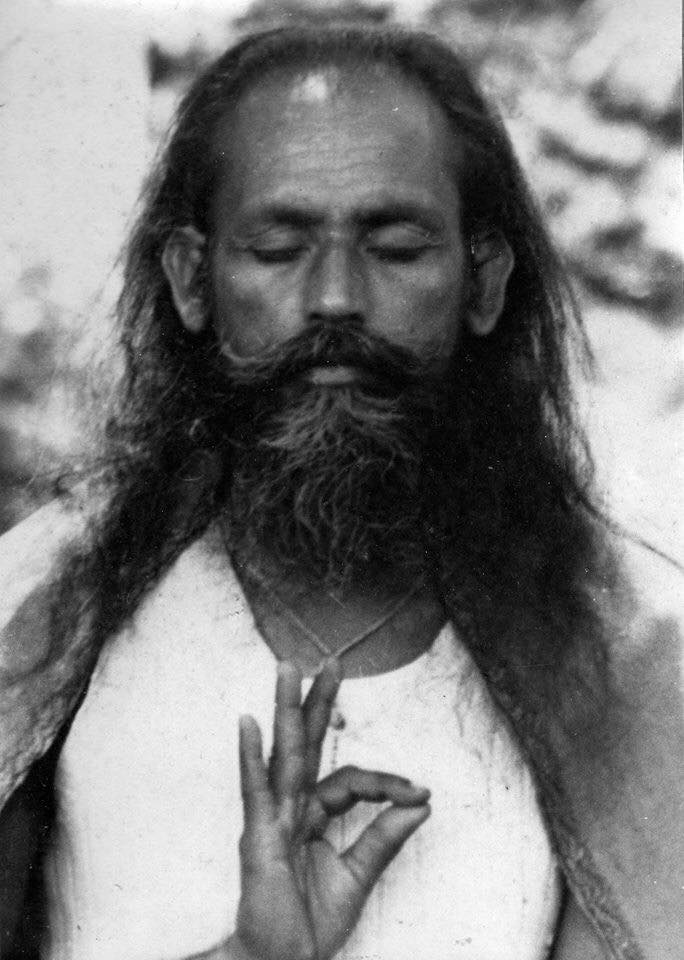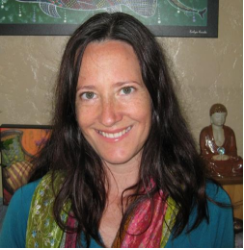Reflections on Regular Sadhana
As September draws to close and October begins, I find myself, as I often do at this time of year, reflecting on the summer that has passed and contemplating what autumn and winter may bring. For the last three summers, I have had the great fortune of being involved with the Yoga Teacher Training (YTT) program. YTT finished in August, but the lessons and experiences still feel fresh in my mind.
The gifts, challenges, and benefits of regular sadhana dominate my post YTT reflections this year. YTT is a time for me to offer up service, but it’s also a time when I re-commit to and deepen my own personal practice. I am always inspired by the curiosity and passion of the YTT participants – which reinforces my own dedication to practice. Over the course of the program, we remind participants about the importance of regular sadhana. Divakar and Chandra tell the students “Regular Sadhana” was such a common answer to the questions put to Babaji that it was shortened to simply “RS”.
It wasn’t so long ago that I was a fresh faced graduate of the teacher training. I finished my 200 hour training at the Centre in 2011 and the biggest gift I received from the training was sadhana. Before I took the teacher training, I had a regular asana practice and an occasional meditation practice. But since July of 2011, I have had a regular morning sadhana practice and I notice if I skip it.
Sutra I: 14 reminds us that yoga should be practiced for a long time, without interruption, and with respect and devotion. Babaji tells us in his commentary on this sutra that “yoga should be a part of life. It should not only be practiced every day, but the mind should not separate from the thought of yoga at any time” (Samadhi Pada, p.37). Now six years of regular practice is really not that long, especially considering that many of our teachers have been practicing with Babaji for over 40 years; but it has been long enough for me to start to feel and notice what happens with regular practice. And I suppose that the effects of practice become most apparent to me on the few days that I skip it.
Maintaining my own personal practice is challenging when I am teaching in the YTT. Our day starts with Sadhana class at 7 am (6 am when I am teaching Shat Karma) and if I am going to practice, it has to happen before 7 am. Last year I did not make a point of getting up early to practice. I thought to myself “I’ll do it later – during one of my breaks” and then the end of the day would arrive and there would be no sitting for sadhana. After a few days of this, I noticed that I was anxious, distracted, easily pulled by emotions, had a hard time sleeping and just did not feel like myself. I remember thinking “Why is this happening? What is different?” and then the light bulb went off – “I’m not sitting in the morning”. So, I started to get up to practice before teaching and the anxiety and distractions ebbed, intense emotion had less pull, sleep came easier, and I started to feel like myself again.
Thankfully, I remembered the lessons from last year and this year I made myself sit in the morning before heading to class. This meant that I had to get up between 4 and 4:30 am; this was extremely challenging because at home I get up at 6 am. It’s surprising the difference those two hours make! I had to kick myself out of bed every morning – despite the temper tantrum raging in my mind. Babaji has said “It is always difficult to do sadhana because the mind seeks comfort. In doing sadhana one needs to sacrifice comfort. So you should kick yourself to do sadhana early in the morning. Even the plants, trees, birds, and animals wake up in the morning and make themselves ready to begin the day.” (Everyday Peace, p.107). And so I would kick myself out of bed, do my sit and afterwards I always felt ready to begin my day.
My sadhana practice helps me stay present. As my teacher and friend Chetna often says, our cushions and mats are the training ground for real life. We sit with the pairs of opposites and our discomfort during practice so that in real life we can remember how to find that middle ground of the present moment. Babji says, “If the present is passing in peace, it will make a peaceful past and sow a seed of peace to grow in the future. Selfless service, desireless love, nonattachment, and compassion promote peace. All these acts are done in the present. The present is the most important thing in life, but we forget the present and either dwell in the past or worry about the future.”
When I remember the present, I am more tolerant, compassionate, and content. These are qualities that help smooth out the wrinkles in my relationships, particularly with my husband. Babaji reminds us “without developing the qualities of tolerance, compassion, and contentment we can’t live together and can’t love each other.” (Silence Speaks, p. 157). This remembrance of the present moment that makes me more tolerant is a continual practice.
This year at YTT I had a profound realization. I began to see that my entire life is practice or sadhana and the peace that I seek is actually already inside me. I have read these words from Babaji many times:
“Sadhana should be part of life. God is within you. Worship God in the form of love for all beings.” (Silence Speaks, p.22)
“If the aim is perfect the chain of sadhana never breaks. Traveling, working, eating, talking – everything becomes sadhana.” (Silence Speaks, p. 30)
“What we are learning is already inside of us; we are not getting it from the outside.” (Silence Speaks, p.34)
“If everything goes easily you can’t test yourself and you can’t understand where you are. Go forward slowly and firmly. Every step in sadhana should be firm so that it will not slip.” (Silence Speaks p.32)
My experiences at YTT have deepened my understanding of these words, and I am so grateful.
At the moment, these words from Babaji are a source of inspiration for practice: “Love everyone including yourself. This is real sadhana.” (Ashtanga Yoga Primer, p.67). I’m sure I’m not the only person who finds it challenging to love themselves from time to time. To help me meet the challenge, I cultivate present moment awareness and embrace the yama of ahimsa.
“The aim of life is to attain peace. No one can give us peace. We can’t buy or borrow it. We have to cultivate it by practicing yama and niyama.” (Ashtanga Yoga Primer p. 5)
A challenge I am currently meeting through practice is the need to please everyone. This is a tough one for me – I really want everyone to like me and I can get caught up in worrying about what others think about me. Babaji teaches us, “No one can please everyone. Your mental peace is more important. If you are in peace then others around you will feel peace. So your best effort should be to work on yourself.” (Ashtanga Yoga Primer p. 62). So I continue to practice.
Part of my motivation to practice is to bring peace into my relationships – “Motivation to bring peace to others is the cause of peace within.” (Fire without Fuel, p.75). Babaji also reminds us to “Reach out to serve others, but watch out for your self-interest.” (Fire without Fuel, p.127). And so, I practice, serve and watch out for my self-interest. I reap the benefits of the seeds I sow during practice and the harvest feels bountiful. I have so much gratitude for the blessings that Babaji’s teachings have brought into my life.
“If you work on yoga, yoga will work on you” Jai Gurudev!
 Gita Tanya Roberts
Gita Tanya Roberts
Our yoga teacher, Baba Hari Dass says “If you work on yoga, yoga will work on you”. This has definitely been my experience. I have been practicing yoga for 16 years, starting in university as a way to alleviate stress and anxiety. My practice has evolved to become the corner stone for all aspects of my life; influencing my relationships, the way I view the world and the community around me, and how I flow through life in general. In 2010, I experienced a life changing work place accident and decided to deepen my personal practice as a way to encourage healing and personal growth. My yogic trainings include SSCY YTT 200 hr and YTT 500 hr at Mount Madonna Center in CA. Baba Hari Dass reminds us that we “teach to learn” and I take this to heart. I learn something new in every class I teach or take. My teaching style integrates principles of alignment, subtle body and ayurveda. By cultivating body, breath, and mind throughout the practice, I encourage students to dive inside and connect with their deepest selves. I teach Hatha, Gentle, Prenatal, Yin, and Restorative classes in Victoria, Langford, and Colwood.


